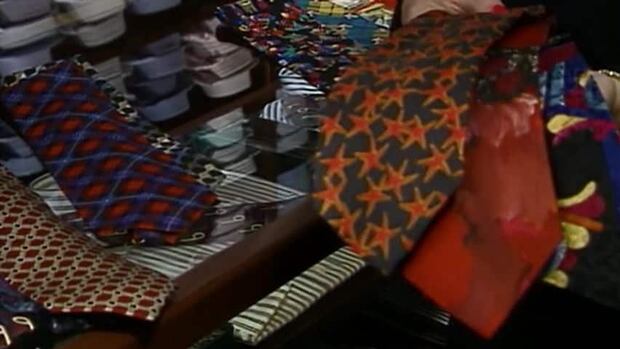When Venture told us what not to wear necktie-wise
Here's what was hot or not in neckwear for 1993
Self-expression can be tricky when it's limited to a scrap of fabric about the neck.

But in 1993, that was all corporate image consultant Roz Usherman had to go on when critiquing the neckwear of men passing by on the streets of downtown Toronto.
'Playing it safe'
For one, a grey tie with dark-blue: "Looks a little bit dated, not too creative. He probably plays it safe."
A bold, impressionistic floral: "He's young-thinking, kind of like a risk-taker."
Plainest blue: "You're sending me a safe message. You're playing it safe for today."

But the wearer was utterly indifferent. "I don't think of messages I'm sending when I wear ties. I couldn't care less."
Love them or hate them, ties were a necessary part of the corporate man's wardrobe.
"Usherman says a tie is an inexpensive way to keep an up-to date appearance, match your market, and make a statement," said Venture host Robert Scully.
In the tie section at a menswear store, Usherman recapped the options, dismissing the old-style power tie and showing a newer look that sends the same message, but stronger.

To wrap up, Usherman reviewed a handful of ties and tried to make a guess about the man who wore them.
Time for a refresh
"Where did you find these?" she asked. "They're four very, very old ties .. they're real narrow."
One had a realistic image of dogs; another was a repeating pattern of telephones.
"He might be an attention-seeker in a very creative fashion," she guessed.
"All in all I suggest he hire me and we'll go shopping for ties," Usherman said.
He was definitely listening: the ties, it turned out, belonged to Scully himself.
